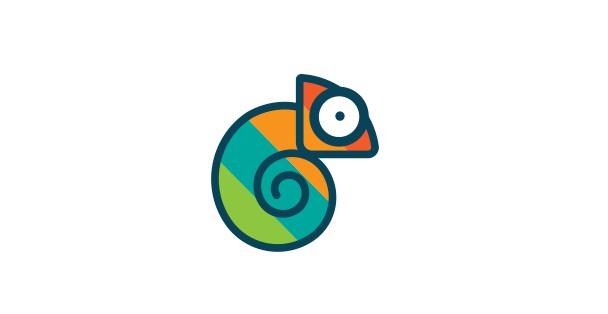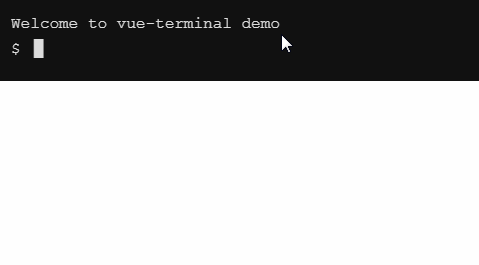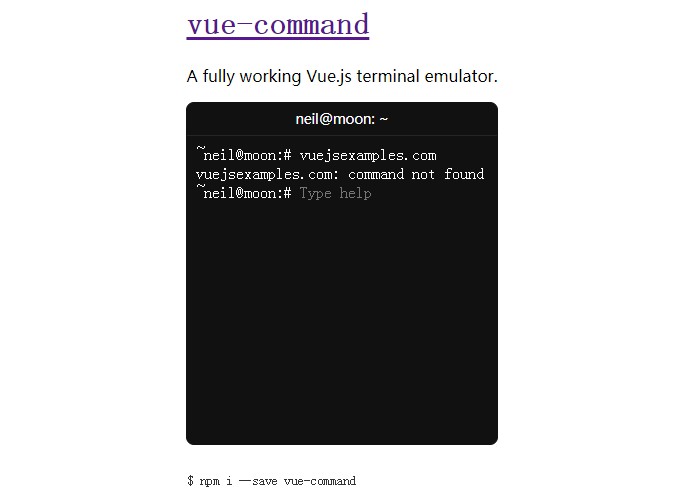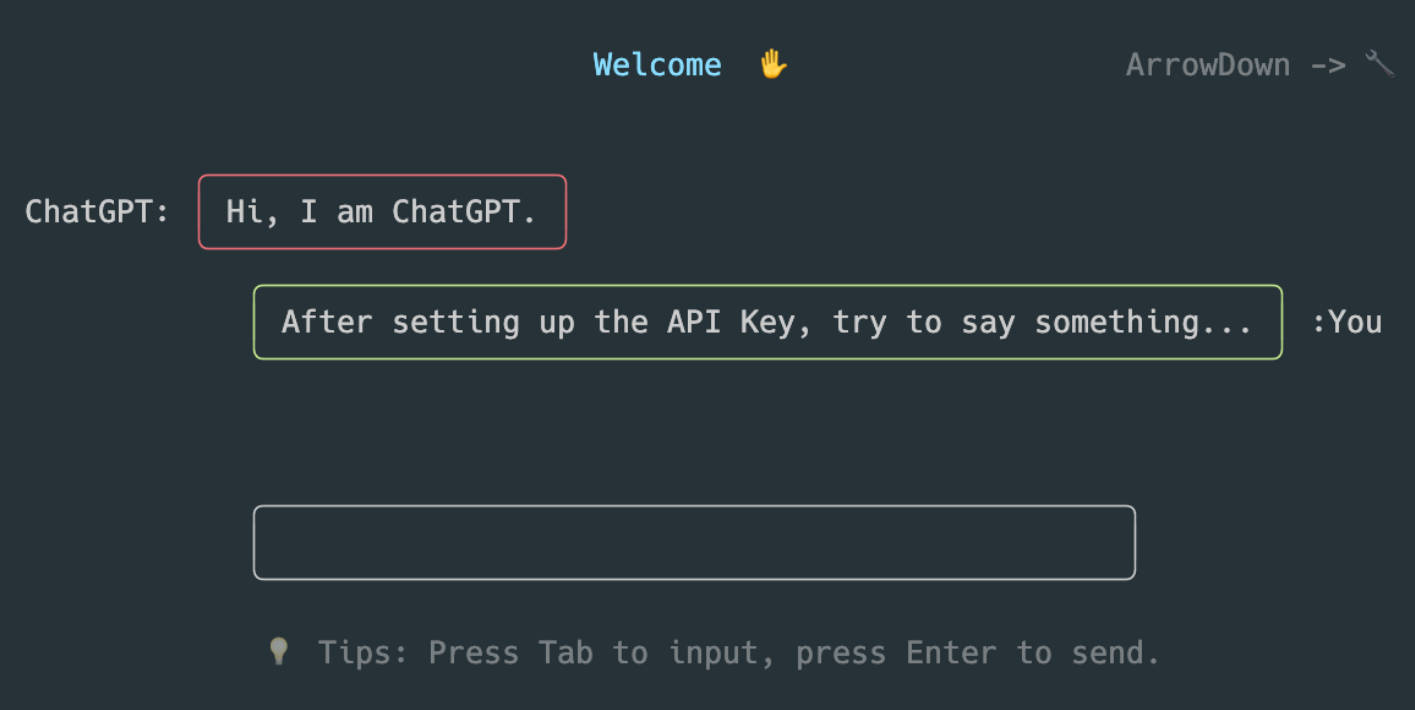VUE-TERMINAL
Vue-terminal is a dependency-free, lightweight terminal emulator in Vue.js. Vue-terminal provide flexible api for developer to define task or command that can be executed by users.
How to use?
npm install vue-terminal
# you can also load vue-terminal.min.js in script tag:
# <script src="/path/to/file/vue-terminal.min.js"></script>
Example
<template>
<vue-terminal :task-list="taskList" :command-list="commandList" />
</template>
<script>
import VueTerminal from 'vue-terminal';
export default {
components: { VueTerminal },
data () {
return {
taskList: {
// your tasks
},
commandList: {
// your commands
}
}
}
}
</script>
About commandList and taskList
The content of taskList or commandList is defined as json object, the key of the json is command name or task name, here is the structure of command or task:
{
commandOrTaskName:{
description: '',
messagesOrTask: [] //(function)
}
}
commandOrTaskName is the command name you defined.
description is something to describe your task, which will be used by the help command.
messagesOrTask is the main part defined to response the command, in commandList, the key is messages, and in taskList the key should be same with task name, here is the detail:
-
messages (array)
messages is an array of
Message, you can only show message string in terminal instance as a response to a command. -
task (function)
you can do more with task, task is a function which use taskName as function name, the first argument is
pushToList, which is a function allow you to send message to the terminal instance, you can callpushToList(Message)to render message in the terminal, the second argument is the string user input, your can parse it and do something interesting. You must return a resolved Promise to tell terminal instance that the task has ended, so that the terminal instance can get ready for more command. -
Message
Message is an object, used to define message showed in terminal:
{ time: '', // time to show time before message body label: '', // label to show a label before message body type: '', // type to set message's type, will set a class to message's label part, there is 5 builtin types: error, success, info, warning, system message: '' // message is a string, the main text showed in terminal. }here is an example:
{ time: generateTime(), type: 'system', label: 'System', message: 'Welcome to vTerminal, this is an example to show you what this project can do.' },
You can check /docs/plugins/commandList.js and /docs/plugins/taskList.js to view the detail of task and command config.
Configuration options
The following options can be passed as props to the VueTerminal component to customize its behavior:
-
title (string): Sets the title that appears at the top of the terminal window and in front of the prompt. Defaults to
vTerminal. -
showHeader (boolean): Indicates whether or not to render the window on top of the terminal. Defaults to
true. -
greeting (string): Sets the greeting that will be shown to the user in the first line of the terminal. Pass
falseto not render a greeting. No defaults value. -
defaultTask (string): The default task runned when initializing the terminal, the task must be defined in
taskListorcommandList. -
defaultTaskCommandd (string): the initial command showed when initializing the terminal, default to
init vTerminal. -
prompt (string): The text to show before the prompt. Defaults to
\{{title}}. -
showHelpMessage (boolean): Indicates whether a help message should be shown. Defaults to
true. -
unknownCommandMessage (object): Allows the message that is printed when an unknown command is run to be customized. This object should have a
messageproperty and can optionally include some additional properties that change how this message is displayed:{ time: '10:53', type: 'error', label: 'Error', message: 'That command is not recognized!' },If not provided, the default message will be displayed:
Unknown Command. type "help" to get a supporting command list. -
autoFocus (boolean): Auto focus cursor when initializing the terminal. Defaults to
true.
If you want more feature or have problem while using this package, feel free to pull a request or open an issue.





